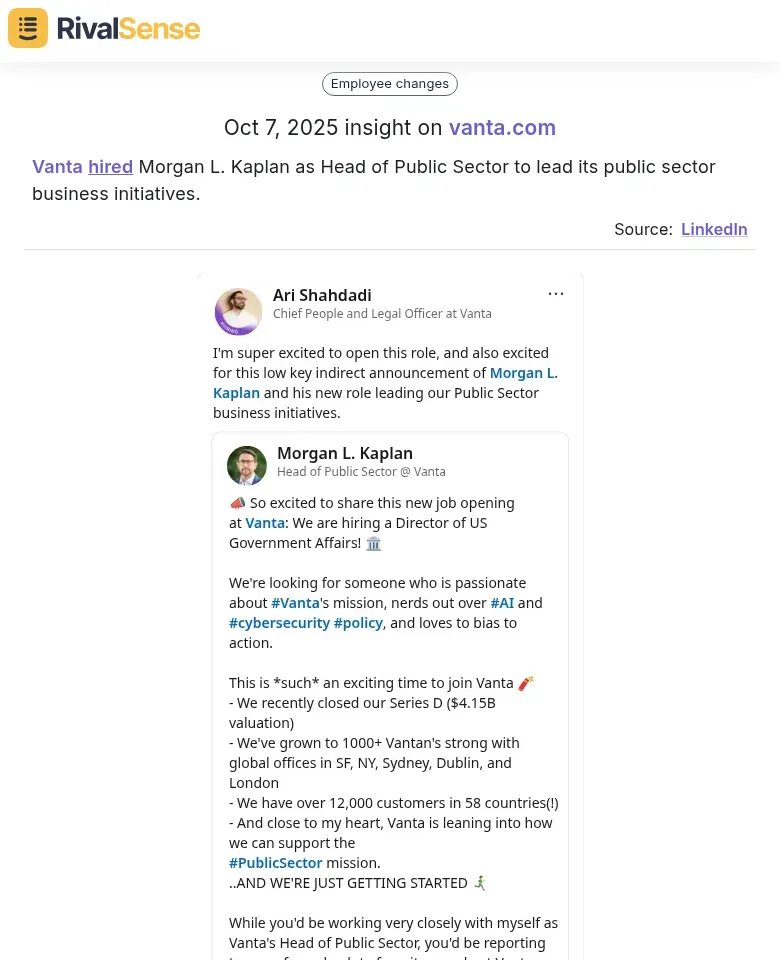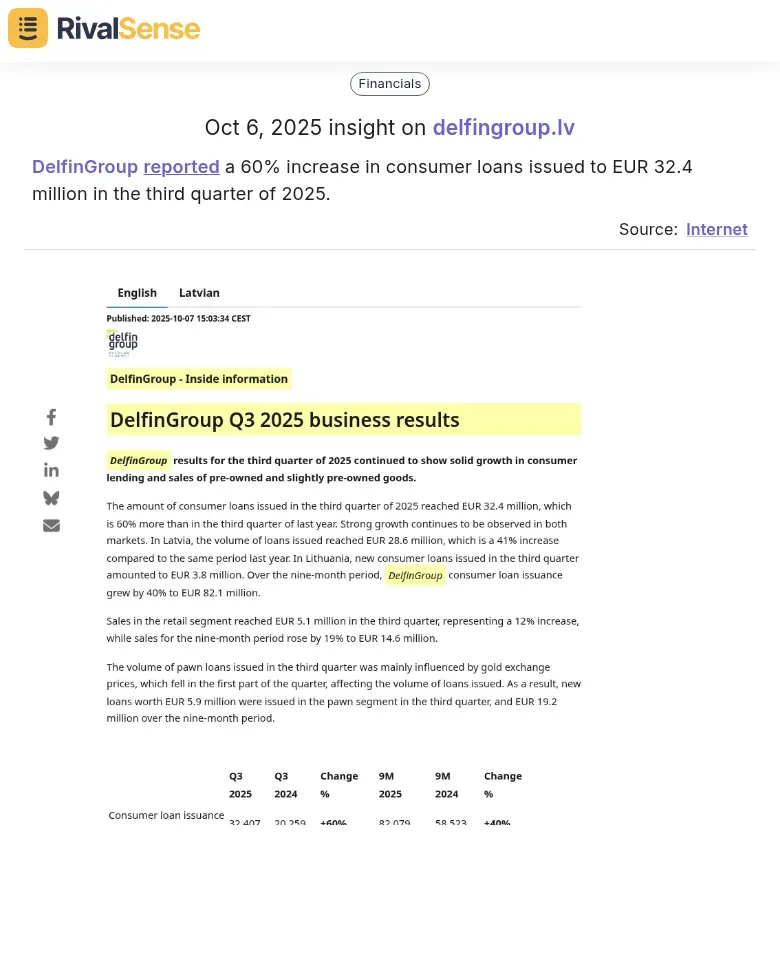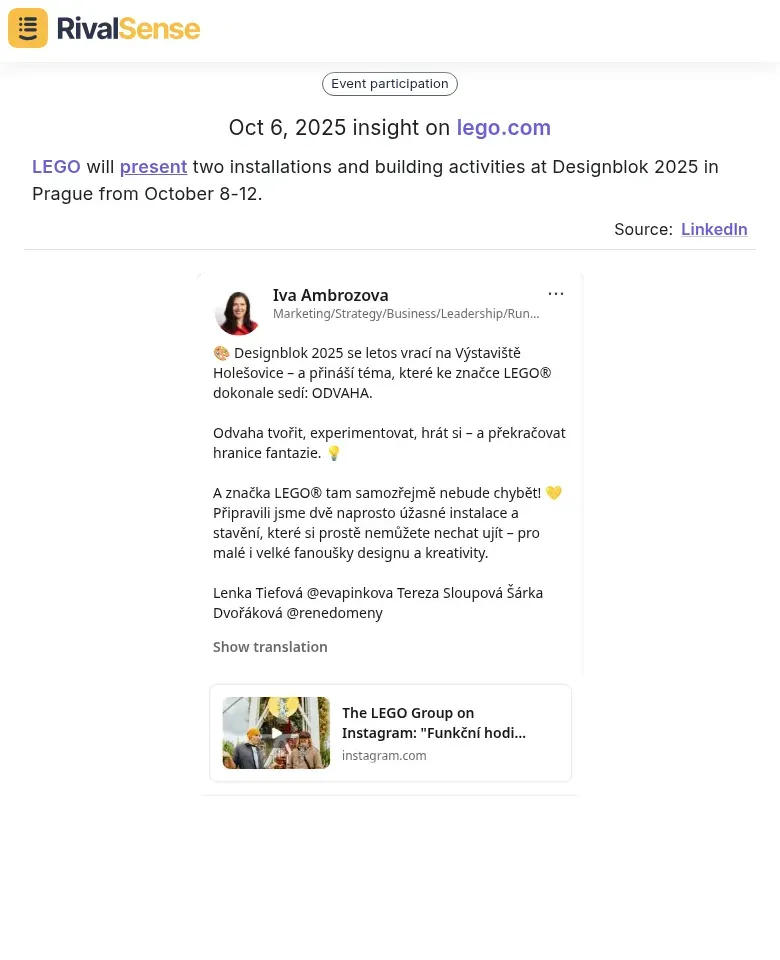Track Competitor Partnerships: A Media Buying Agency's Strategic Guide
For media buying agencies, tracking competitor partnerships is essential for strategic positioning and client acquisition. Understanding these alliances can uncover new market opportunities and threats that might otherwise go unnoticed. Partnerships reveal market trends, expansion strategies, and potential collaboration opportunities. By analyzing who your rivals partner with—be it tech platforms, publishers, or complementary service providers—you gain insights into their target markets, service enhancements, and competitive advantages. This intelligence helps you anticipate market shifts, identify gaps in your own offerings, and craft compelling pitches to clients seeking proven partnership ecosystems. For example, an agency noticed a competitor's partnership with a niche data analytics firm, leading them to explore similar alliances that boosted their campaign performance and won over data-driven clients.
Practical Steps:
✅ Regularly monitor competitor websites, press releases, and social media for partnership announcements.
✅ Use tools like RivalSense to track mentions and collaborations automatically.
✅ Analyze the impact of partnerships on competitor client portfolios and market share.
✅ Evaluate potential partners based on competitor successes to inform your own strategy.
This proactive approach turns partnership tracking into a growth lever.
Identifying Key Competitors and Their Partners
Accurate identification of competitors and their partners sets the foundation for effective tracking and strategic analysis. Start by mapping your direct rivals—agencies with similar services and target clients—and indirect competitors like in-house teams or freelancers. Use tools such as Similarweb for traffic analysis and LinkedIn for team insights to build a comprehensive list. For partnership discovery, monitor press releases, social media announcements, and industry news via Google Alerts or Mention. Check competitor websites for 'Partners' or 'Case Studies' sections, and leverage platforms like Crunchbase for funding and partnership data. Categorize partners into types like publishers (e.g., The New York Times for ad space), tech providers (e.g., Google Ads for tools), and brands (e.g., Nike for client collaborations).
Actionable Checklist:
- 🔍 Create a competitor list with 5-10 key names
- 📢 Set up alerts for partnership-related keywords
- 📊 Analyze annual reports for alliance mentions
- 📝 Use a spreadsheet to track partner types and strategic impact
Focus on partners that drive innovation or market expansion to stay ahead of trends.
Tools and Strategies for Effective Tracking
Effective competitor partnership tracking requires a blend of automated tools and manual research to ensure no critical insights are missed. Combining technology with hands-on approaches provides comprehensive coverage and real-time updates. Tools like RivalSense offer features such as real-time monitoring of partnership announcements, media mentions, and website changes, enabling you to spot collaborations early. Set up automated alerts for keywords like "partnership," "collaboration," or competitor names to receive instant notifications via email or dashboard. For manual research, regularly check competitor press releases, social media, industry news sites, and review platforms for indirect clues.
Best Practices:
- 📅 Create a tracking spreadsheet with columns for partner names, dates, and strategic value
- 🔄 Conduct quarterly deep dives into competitor websites and annual reports
- 🤝 Network at industry events to gather insider insights
- 🔎 Use Boolean searches (e.g., "competitor A AND partner") for precise results
Always validate findings with multiple sources to avoid misinformation and maintain accuracy.
Analyzing Partnership Data for Strategic Insights
Partnership data reveals competitor strengths and weaknesses, providing a window into their strategic priorities. Systematic analysis of this data can uncover patterns that inform your own business decisions and help you stay competitive. Analyze their partner types—are they working with niche platforms or global giants? This indicates their target markets and resource allocation. For example, if a rival partners with regional ad networks, they're likely expanding geographically. Track partnership frequency and duration to spot trends—sudden spikes may signal aggressive growth phases.
Strategic Analysis Checklist:
- 🏢 Categorize partners by industry and size
- 🎯 Note partnership objectives (e.g., tech integration, co-marketing)
- 🌍 Assess geographic coverage
- 🔒 Evaluate exclusivity clauses
Apply insights to your strategy: if competitors dominate a niche, explore underserved markets, and leverage their weak spots to prioritize your own alliances.
Case Study: Turning Insights into Action
Real-world examples illustrate how competitor insights can be transformed into actionable strategies that drive growth. In this case, a media buying agency leveraged partnership tracking to gain a competitive edge and expand its client base. Media buying agency 'AdVantage Partners' tracked a competitor's new partnership with a niche analytics platform through RivalSense. They noticed the competitor was targeting tech startups with this combined offering. AdVantage analyzed the partnership's strengths (advanced analytics) and weaknesses (limited industry expertise).
Step-by-Step Action Plan:
- Identify Gaps: The competitor lacked startup industry knowledge
- Leverage Strengths: AdVantage highlighted their own tech startup expertise
- Customize Pitch: Created tailored campaigns emphasizing industry insights
- Win Client: Secured a major fintech client who valued industry-specific knowledge over raw analytics
ROI Impact: Within 6 months, AdVantage saw:
- 35% increase in tech startup clients
- 22% growth in market share within this segment
- 5:1 ROI on partnership tracking investment
Lessons Learned & Pitfalls to Avoid:
- ✅ Do: Validate partnership effectiveness before reacting
- ✅ Do: Focus on your unique differentiators
- ❌ Don't: Copy partnerships blindly without strategic alignment
- ❌ Don't: Overlook your own strengths while chasing competitors
Practical Checklist:
- 📅 Monitor partnership announcements weekly
- 👥 Analyze competitor's target audience shifts
- 🔍 Identify gaps in their combined offering
- 💡 Position your unique value against their weaknesses
- 📊 Track campaign performance metrics post-implementation
Beyond Partnerships: Other Key Competitor Moves to Monitor
While partnerships are crucial, tracking other aspects of competitor activity can provide a holistic view of their strategy and market position. Insights into management changes, financial performance, and event participation reveal underlying trends that complement partnership data. By monitoring these areas, you can anticipate shifts, assess competitor health, and identify new opportunities for your agency.
🧑💼 Management Changes

- Why it's valuable: Tracking key hires, like Vanta appointing a Head of Public Sector, can signal strategic shifts into new markets or business units. This helps you anticipate competitor expansion and adjust your own targeting and resource allocation.
📈 Financial Performance

- Why it's valuable: Monitoring financial updates, such as DelfinGroup's 60% increase in consumer loans, provides insights into competitor health and market demand. Use this to benchmark performance, identify growth areas, and refine your financial strategies.
🎪 Event Participation

- Why it's valuable: Seeing which events competitors participate in, like LEGO at Designblok, indicates their marketing focus and audience engagement strategies. This can inform your own event planning, sponsorship decisions, and content marketing efforts.
By expanding your tracking beyond partnerships, you gain a competitive edge in anticipating moves and seizing opportunities in the dynamic media landscape.
Conclusion and Next Steps
Ongoing competitor partnership monitoring is essential for media buying agencies to identify market trends, uncover new opportunities, and avoid being blindsided by competitor moves. Implementing a structured approach ensures you stay ahead of market changes and maintain a strategic advantage. To start or improve your tracking:
- 🔍 Identify 3-5 key competitors and their known partners
- 📢 Set up alerts for partnership announcements and press releases
- 📱 Monitor social media and industry news for indirect collaborations
- 📊 Analyze competitor campaigns for co-branded elements
- 🔄 Review quarterly for patterns and adjustments
Leverage tools like RivalSense to automate tracking, receive real-time alerts, and gain actionable insights. Ready to get started? Try RivalSense for free at https://rivalsense.co/ and get your first competitor report today to transform competitive intelligence into growth for your agency!
📚 Read more
👉 How Kérastase's Launch Alert Drove Competitor's Strategic Move
👉 Track Website Changes for Key Account Growth Insights
👉 Luxury Haircare Key Account Success: Kérastase Case Study
👉 Competitor Market Entry Insights: Benchmarking Reports for Strategic Growth
👉 Analyzing Competitor Certifications and Partnerships: A Real-World Insight
